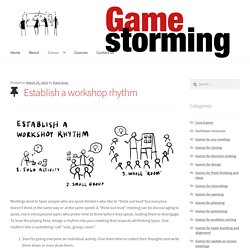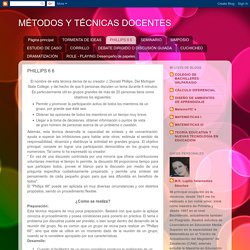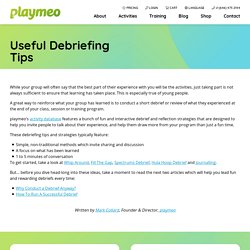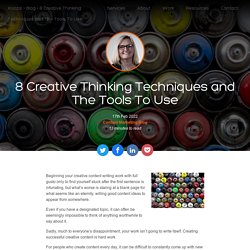

KTN Innovation Canvas - KTN Innovation Canvas. WOW! Customer Experience. Communication methods supporting design processes. Blog - Gamestorming. Object of play The Hero’s Journey Agenda is a unique and different way to lay out the agenda for a meeting or workshop that creates a sense of adventure and builds anticipation for the meeting.

Number of players One, usually the facilitator, created live in front of a group. Duration: 10-15 minutes. How to play I am going to give you a script here, based on the video above. But this exercise works best if you make it your own, using a story you love and that you feel your audience will be familiar with, like a favorite fairy tale or movie. 1.
“This circle represents all the things we’re going to do today. If you have geeks in the room, can actually talk about it in terms of Star Wars, or Lord of the Rings, or another story you expect the group to be familiar with. You can also say, “Any story, any epic adventure follows this basic format. 2. “The hero’s journey basically has two big components to it. Draw a wavy line to represent the boundary between the known and unknown. 3. Belbin. MÉTODOS Y TÉCNICAS DOCENTES: PHILLIPS 6 6. El nombre de esta técnica deriva de su creador J.

Donald Phillips. Del Michigan State College, y del hecho de que 6 personas discuten un tema durante 6 minutos. Es particularmente útil en grupos grandes de más de 20 personas tiene como objetivos los siguientes: Permitir y promover la participación activa de todos los miembros de un grupo, por grande que éste sea.Obtener las opiniones de todos los miembros en un tiempo muy breve.Llegar a la toma de decisiones, obtener información o puntos de vista de gran número de personas acerca de un problema o cuestión. Además, esta técnica desarrolla la capacidad de síntesis y de concentración; ayuda a superar las inhibiciones para hablar ante otros; estimula el sentido de responsabilidad, dinamiza y distribuye la actividad en grandes grupos.
El "Phillips 66" puede ser aplicada en muy diversas circunstancias y con distintos propósitos, siendo un procedimiento flexible. ¿Como se realiza? Preparación: Debriefing Tips & Strategies - Dozens of Useful Reflection Activities. While your group will often say that the best part of their experience with you will be the activities, just taking part is not always sufficient to ensure that learning has taken place.

This is especially true of young people. A great way to reinforce what your group has learned is to conduct a short debrief or review of what they experienced at the end of your class, session or training program. playmeo’s activity database features a bunch of fun and interactive debrief and reflection strategies that are designed to help you invite people to talk about their experience, and help them draw more from your program than just a fun time.
These debriefing tips and strategies typically feature: Simple, non-traditional methods which invite sharing and discussionA focus on what has been learned1 to 5 minutes of conversation To get started, take a look at Whip Around, Fill The Gap, Spectrums Debrief, Hula Hoop Debrief and Journalling. Written by Mark Collard, Founder & Director, playmeo. Análisis morfológico. ¿Qué es y para qué?

Es una de las técnicas más valiosas para generar gran cantidad de ideas en un corto período de tiempo y se desarrolló en los trabajos tecnológicos de la astrofísica y las investigaciones espaciales llevados a cabo en los años cuarenta, como resultado de los trabajos del astrónomo Fritz Zwicky. Es una técnica combinatoria de ideación creativa consistente en descomponer un concepto o problema en sus elementos esenciales o estructuras básicas. Con sus rasgos o atributos se construye una matriz que nos permitirá multiplicar las relaciones entre tales partes. Así pues, en su forma más básica, el Análisis Morfológico no es más que la generación de ideas por medio de una matriz. ¿Cómo? 1. 2. Para determinar si un parámetro es lo suficientemente importante para añadirlo, hay que preguntarse: “¿Seguiría existiendo el problema sin el parámetro que estoy pensando para la matriz?”
8 Awesome Creative Thinking Techniques. Writer’s block can be a royal pain.

Beginning your work with full gusto only to find yourself stuck after the first sentence is infuriating, but what’s worse is staring at a blank page for what seems like an eternity, willing ideas to appear from somewhere. Even if you have a designated topic, it can often be seemingly impossible to think of anything worthwhile to say about it. Sadly, much to everyone’s disappointment, your work isn’t going to write itself. For people who create content every day, it can be difficult constantly coming up with new ideas. Luckily, if you’ve hit that creative wall, there are several techniques you can implement to get those creative juices flowing again. Below are eight of my favourite creative problem solving techniques. 1. Let’s begin with a timeless classic. The key to mind mapping is to take note of every idea that comes up. 27 creativity and innovation tools - in one-pagers! All creative tools.
Management Training and Leadership Training - Online. The 7 essential innovation questions.